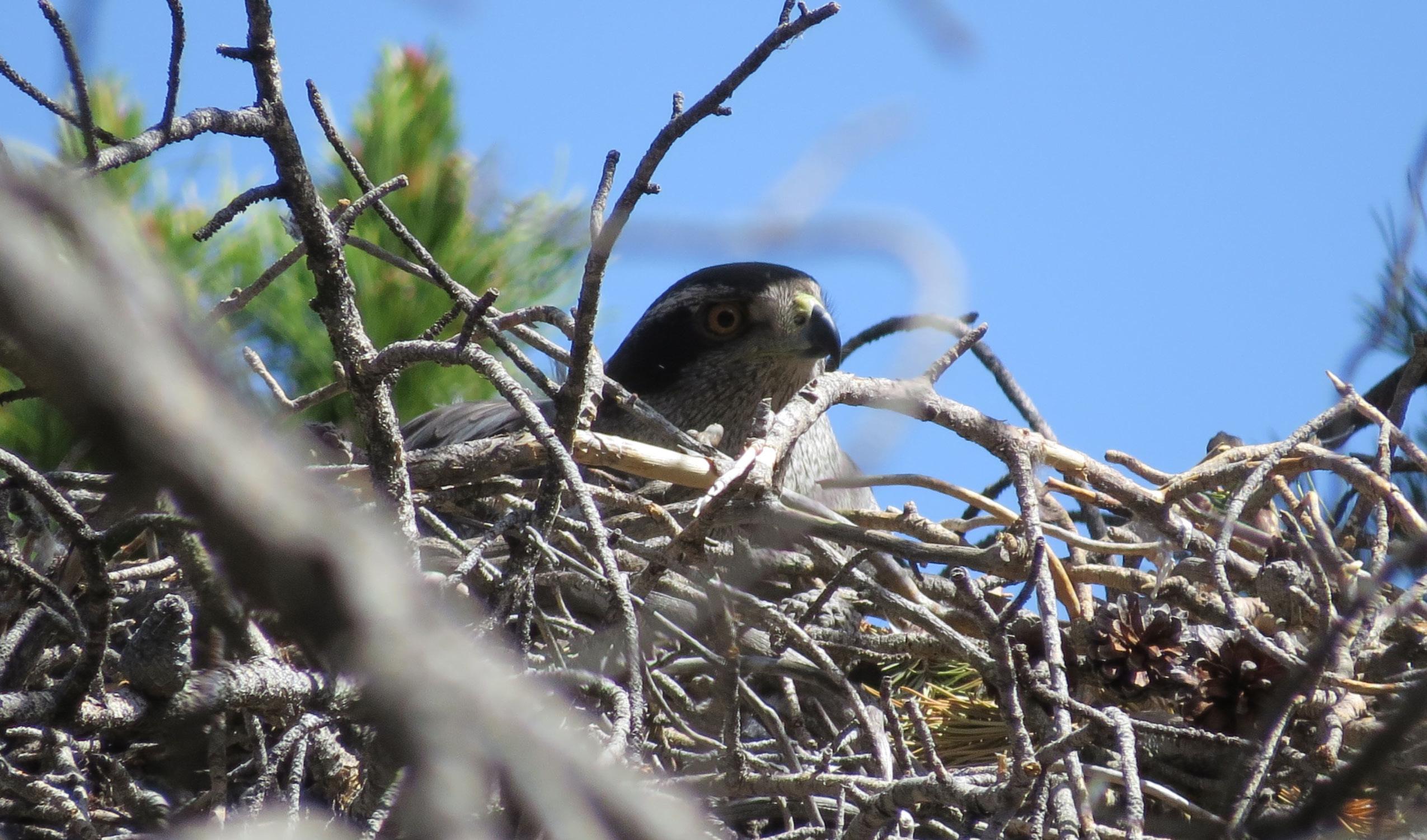
5 minute read
Forest Hawks
Story and photos by Scott Rashid Director of CARRI
Most everyone has seen red-tailed hawks soaring high over open meadows, or American kestrels perched on a power line along the roadside. These raptors are commonly seen in the open and easily observed as they are hunting in the open meadows. However, there is a group of raptors that are a bit more difficult to observe: the accipiters.
Advertisement
Accipiters are forest-dwelling raptors with short, rounded wings and long tails. Having short wings and long tails enables these birds to maneuver rapidly through the thick forests when chasing potential prey.

Female northern goshawk on her nest
Photo by Scott Rashid
The largest of the accipiters, northern goshawks, are raven-sized birds that prefer old-growth forests for nesting and raising their young.
These raptors live far within the forests of Colorado, usually above 8,000 feet. Within Rocky Mountain Naotinal Park (RMNP) these hawks preferred habitat containing a mixture of aspen, Douglas fir, ponderosa, and lodgepole pines and frequently has an active water source.

Northern goshawk nestlings
Photo by Scott Rashid
Northern goshawks in and around RMNP seem to prefer nesting in live aspens, but will also construct their nests in lodgepole pine and Douglas-fir. Northern goshawks seem to prefer nesting in live trees because the canopy above the nest gives some protection from the elements as well as sharp-eyed avian predators. When choosing a nesting site northern goshawks frequently, but not exclusively, construct their nests within the woods along a trail or logging road. Doing this may aid the males in finding their nests when returning with prey.

Fledgling northern goshawk
Photo by Scott Rashid
Northern goshawk nests are often very large affairs with some nests being more than four feet across and three feet deep. They commonly have six or more nests within their territory that are used in different years. This may be due to a lack of prey in one area or parasites within a nest.
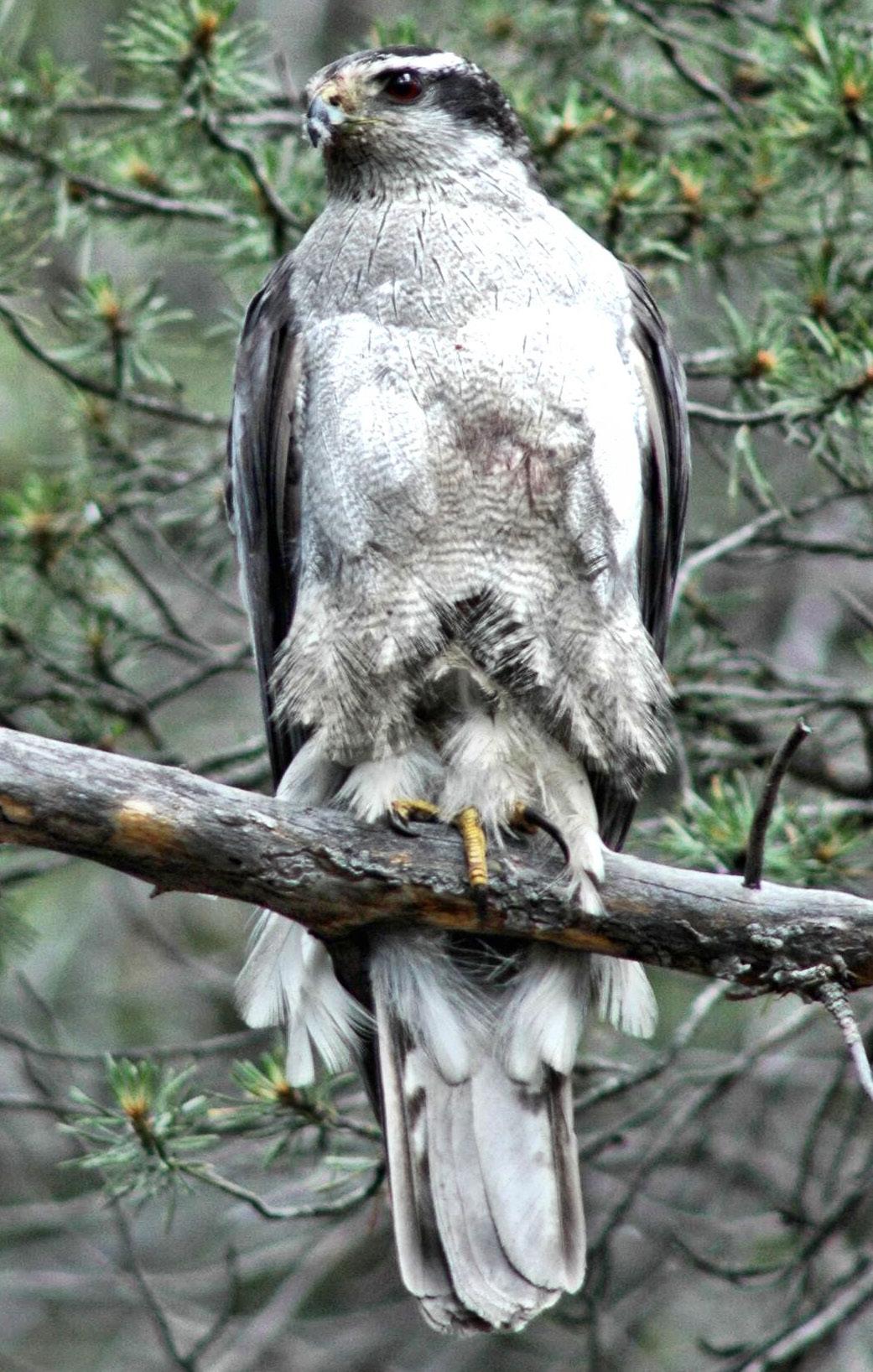
An adult male northern goshawk
Photo by Scott Rashid
Northern goshawks will also prey upon rabbits, and hares, tree and ground squirrels, rats, and muskrats.
Small birds including wrens, kinglets, small finches, and warblers will nest close to northern goshawks, as the small birds are of no interest to the northern goshawk. The goshawk is so protective of its nest, that the smaller birds automacally have protection from potential danger near their nests.

Adult Cooper's hawk with chipmunk
Photo by Scott Rashid
The crow-sized Cooper's hawk is much less choosy about its nesting site. Historically, Cooper's hawks nested in mixed forests far from human habitation.

Cooper’s hawk near a bird feeder
Photo by Scott Rashid
When nesting in forests, they nest on the edges of the woodlot, often two-thirds to three-quarters up the tree near the trunk. Males construct the majority of the nest; however, some females will assist. Their nests are roughly two-feet across and ten inches deep.
As bird feeding has become more popular and Eurasian collared-doves have become more prevalent in cities and towns, Cooper's hawks have become quite common. In some locations, they are the most common raptor. When in cities, they often construct their nests a few feet from the second-floor windows of homes and buildings, making them easy to monitor.

Portrait of a juvenile Cooper’s hawk
Photo by Scott Rashid
Female Cooper's hawks are roughly twenty-inches from head to tail where their male counter-parts are only fifteen-inches. The sharp-shinned hawks are by far, the smallest, with females being fourteen inches from head-to-tail and the males being less than a foot long.
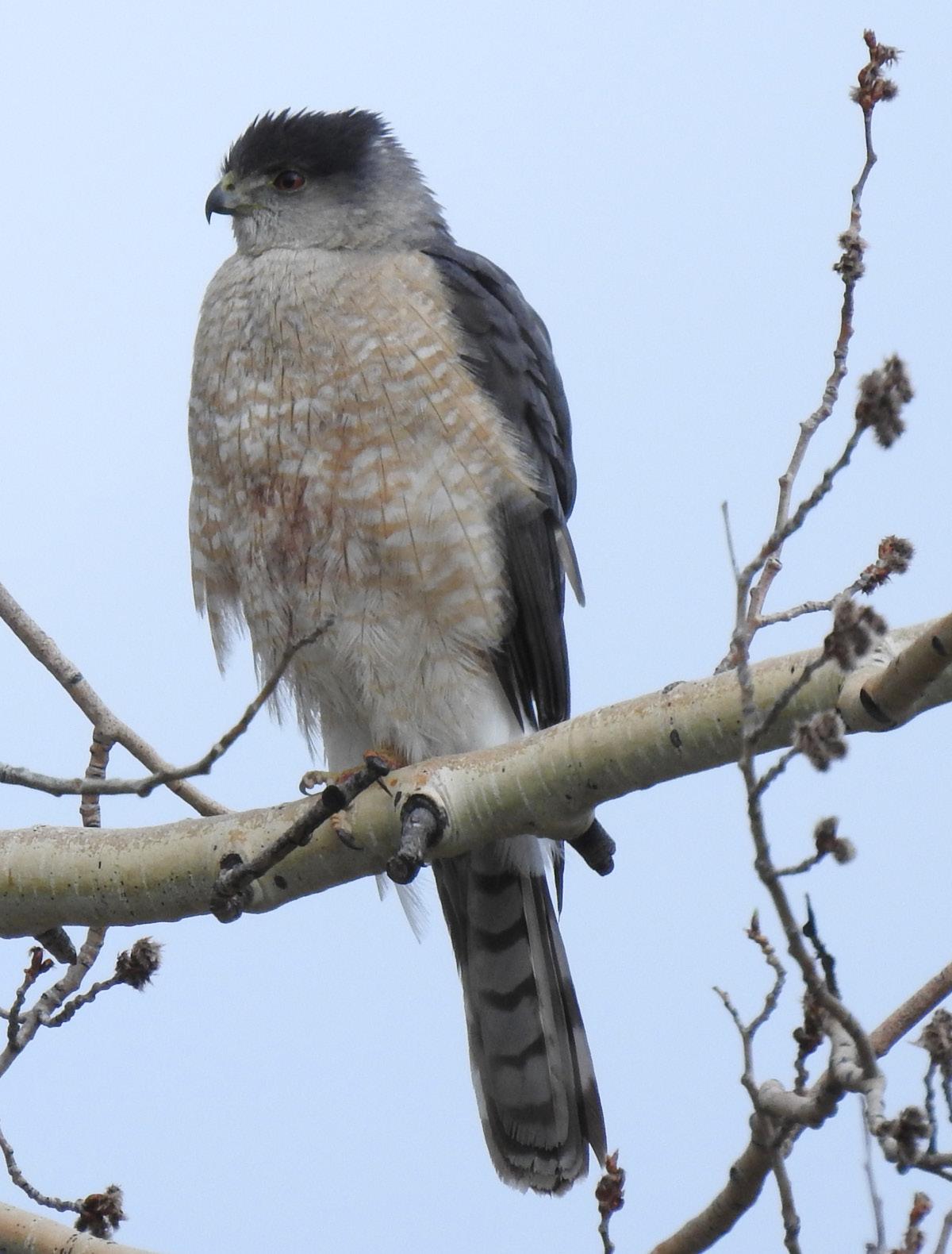
Adult Cooper’s hawk
Photo by Scott Rashid
Cooper's hawks prey upon many species of birds as well, but they frequently feed upon larger birds including doves, pigeons, robins and other thrushes, woodpeckers including northern flickers and hairy woodpeckers, sharp-shinned hawks, and American kestrels, screech and northern saw-whet owls, and game birds including small shorebirds, quail, pheasants, chickens, grouse, and ducks. In the west, they take birds as large a Clark's nutcrackers, black-billed magpies, and occasionally American crows and pigeons. Unlike sharp-shinned hawks, Cooper's will routinely prey upon mammals including chipmunks, ground squirrels, rabbits, and hares.
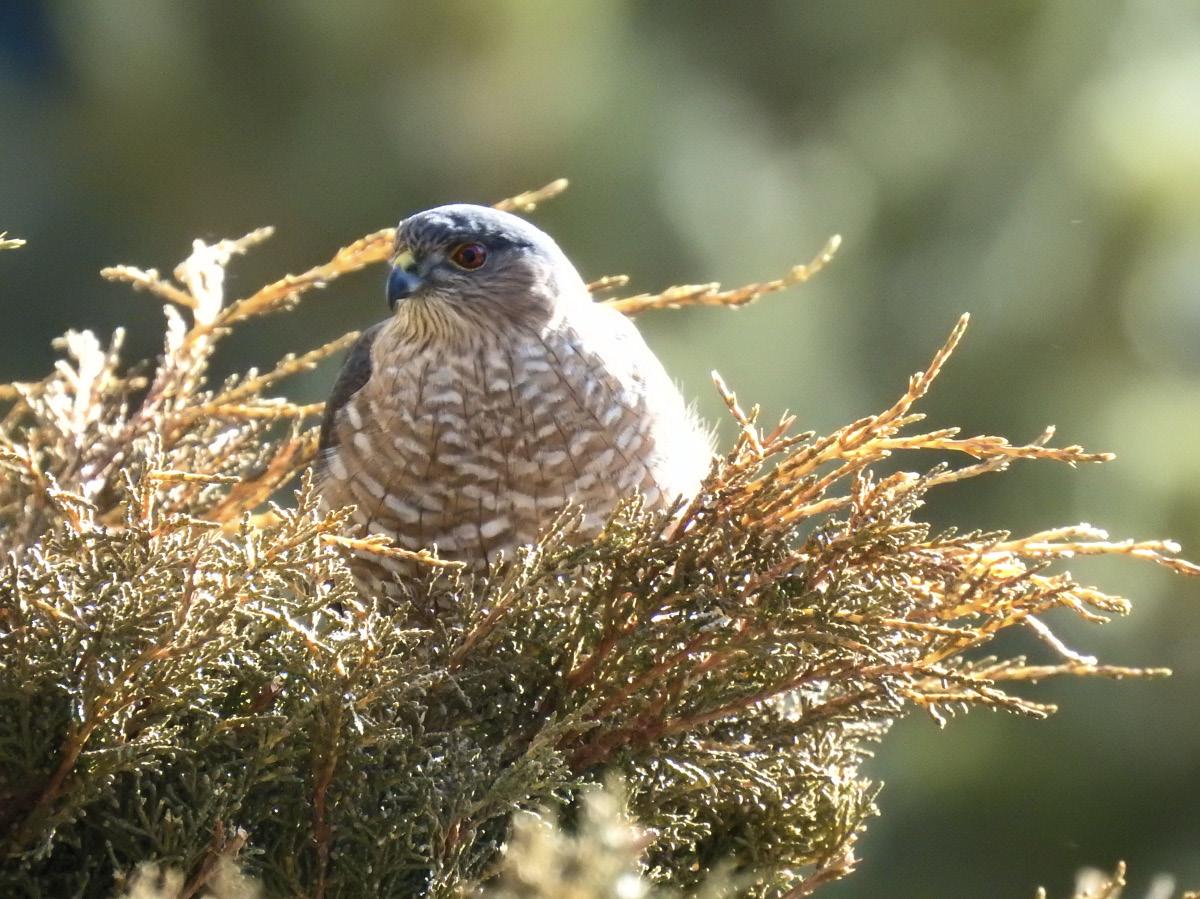
Sharped-shinned hawk in juniper
Photo by Scott Rashid
The smallest of the woodland hawks is the sharp-shinned hawk. They are a very high-strung species. These hawks are seldom if ever found nesting in cities and towns unless in the far northern parts of their range.
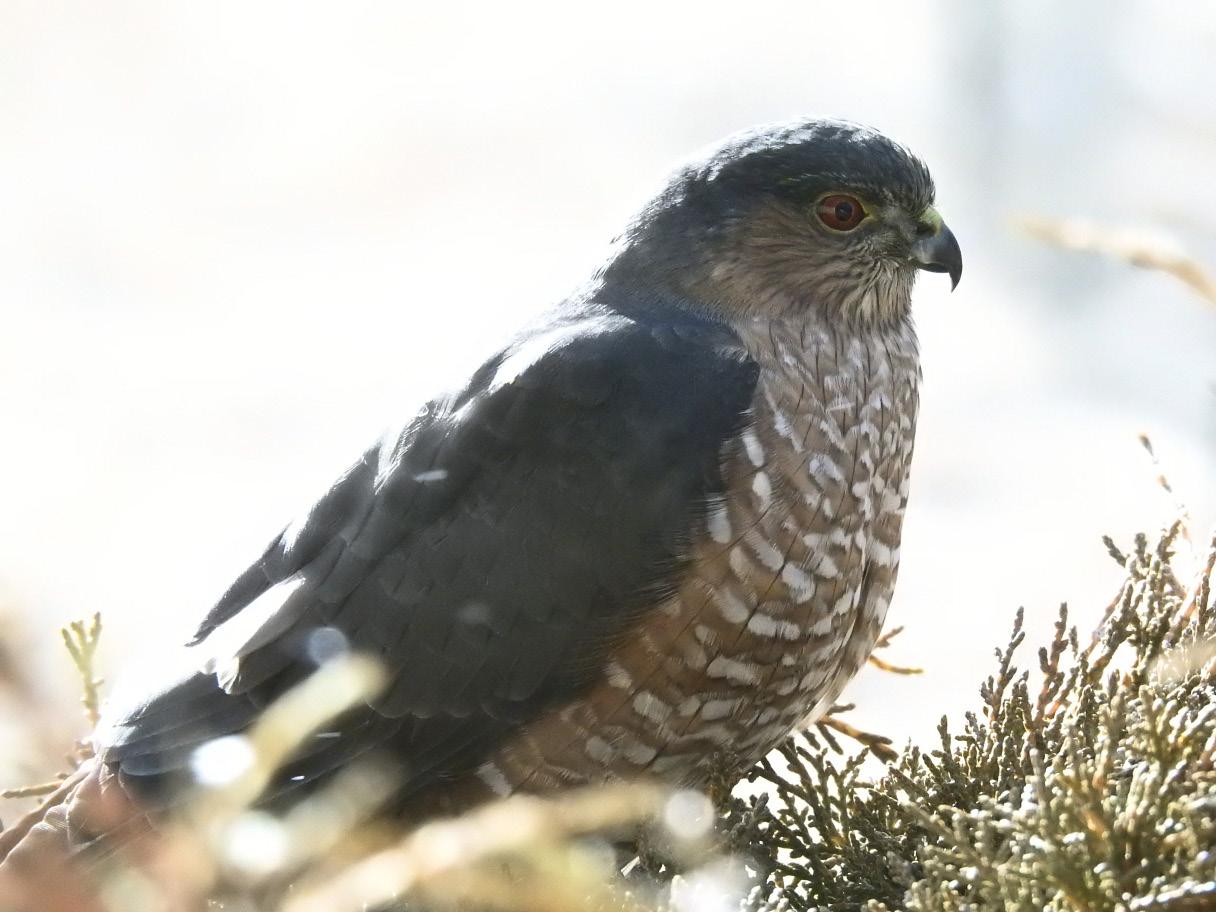
Adult sharp-shinned hawk
Photo by Scott Rashid
Sharpies, as they are often called, construct a larger nest than their larger relatives. The pair brings construction material to the nestng site, but the female does the majority of the nest construction. Their nests are slightly larger than a basketball and often placed against the trunk of the tree and roughly fifteen feet from the ground. Sharp-shinned hawks will occasionally construct their nests on the tops of abandoned squirrel nests. In RMNP, sharp-shinned hawks are the rarest of the three accipiters as their nests are few and far between.
Due to their small size, they nest in more dense habits than their larger cousins.
Sharp-shinned hawks are bird specialists, preying upon many species of small birds, including creepers, wrens, small woodpeckers, warblers, finches, and sparrows. They will occasionally prey upon mice, voles, and chipmunks.

Adult sharp-shinned hawk
Photo by Scott Rashid
Larger birds including crows and magpies will nest close to sharp-shinned hawks, as the hawk is no threat to them.
The females of these three species are much larger than their male counterparts; which can make identifying the individuals a bit tricky.

Adult sharp-shinned hawk
Photo by Scott Rashid
Female northern goshawks are, by far, the largest of the three, and can grow to a length of twenty-seven inches, where the smaller males are only about twenty inches from head to tail.
The northern goshawk is such a magnificently fast and powerful predator that it routinely takes much larger prey than their smaller cousins.
Northern goshawks will prey upon any medium-sized bird they come across, including both sharp-shinned and Cooper's hawks. They also take a wide variety of game birds, including half-grown turkeys, grouse, pheasants, ducks, geese, larger shorebirds, pigeons, and doves. They also prey upon herons, woodpeckers, including pileated and northern flickers, large finches, including pine and evening grosbeaks, jays, crows, and ravens.
In the next few months all three of these species will be migrating north to their nesting grounds, so keep an eye out for them near your bird feeders.
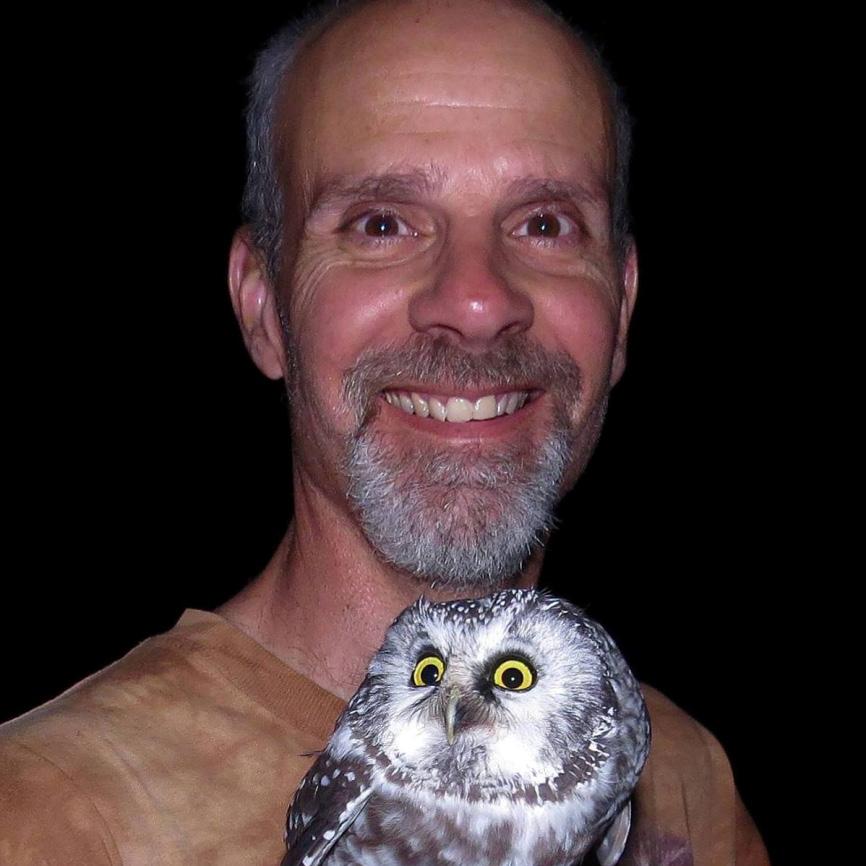
Artist, researcher, bird rehabilitator, author, and director of a nonprofit are only a few things that describe Scott Rashid. Scott has been painting, illustrating and writing about birds for more than 30 years. In 2011, Scott created the Colorado Avian Research and Rehabilitation Instute in Estes Park. In 2019, Scott located and documented the first Boreal Owl nest in the history of Rocky Mountain National Park in Colorado. Scott has written and published five books and several papers on a variety of avian species. More information available on his website:
hp://www.carriep.org/
Cooper’s hawk near a bird feeder

